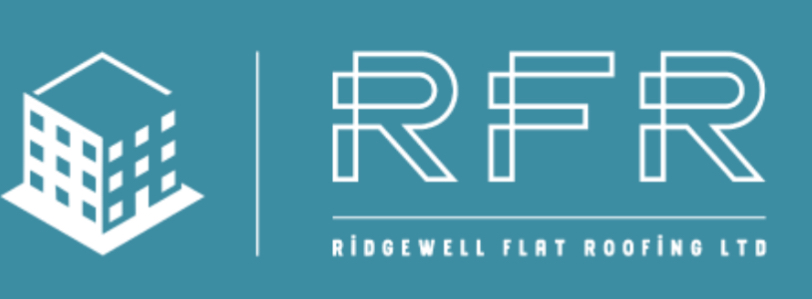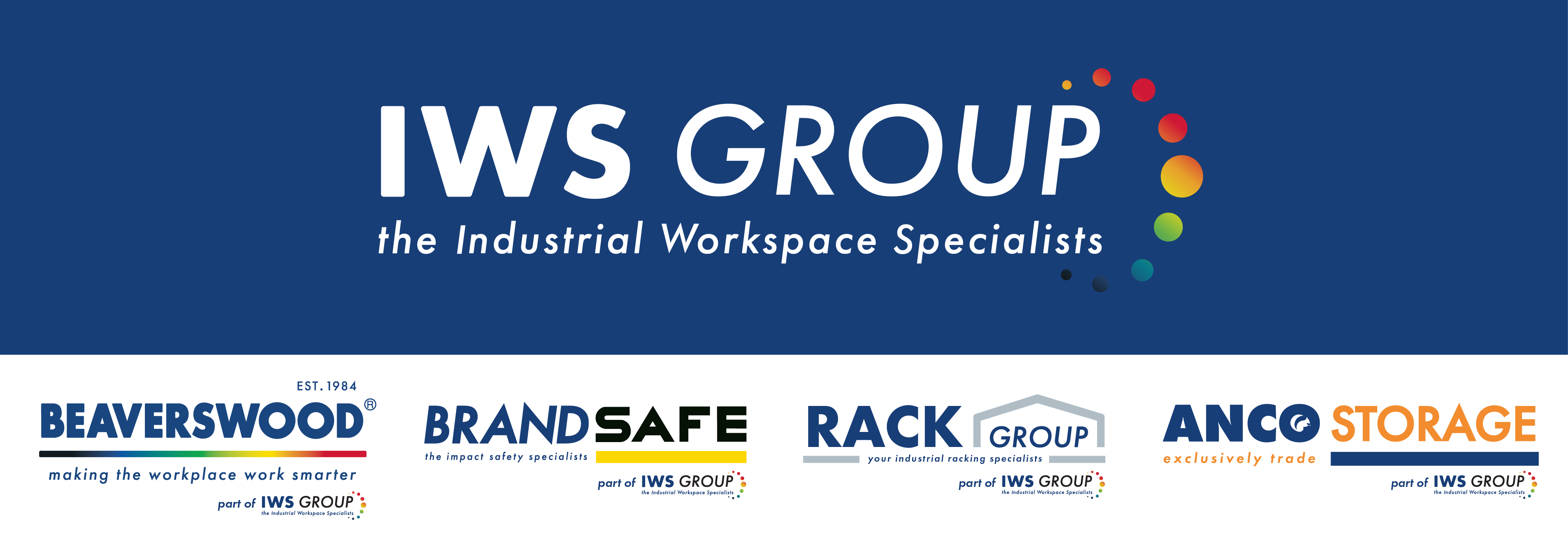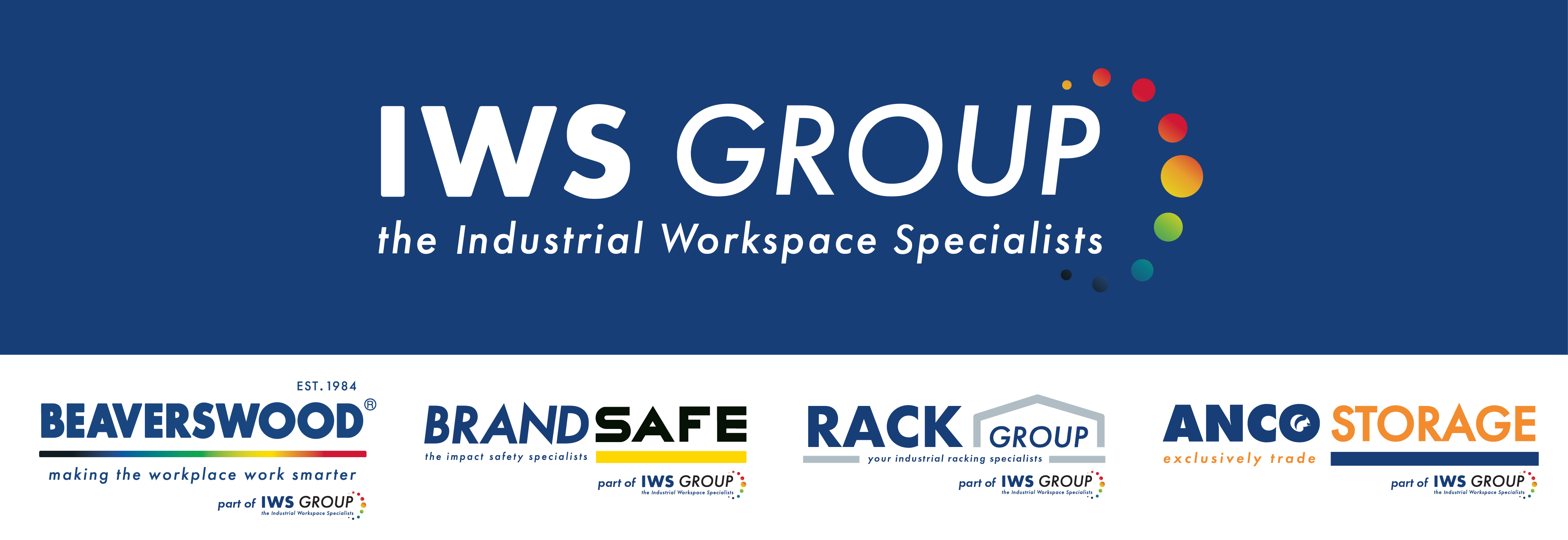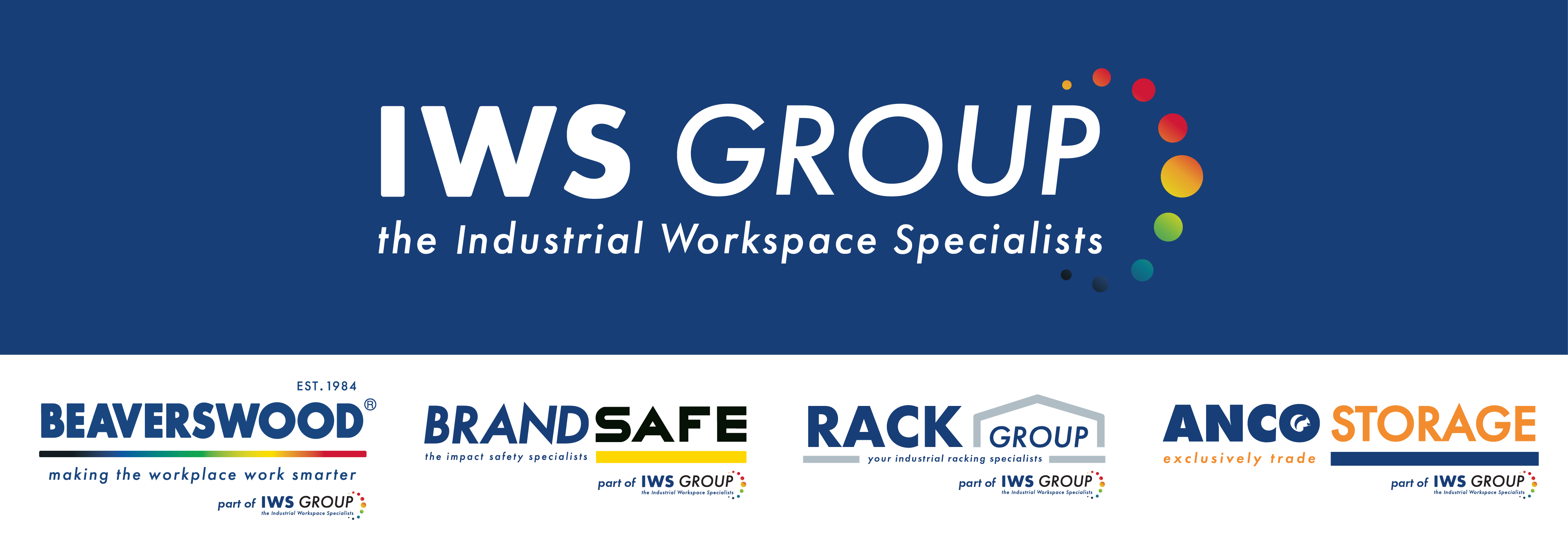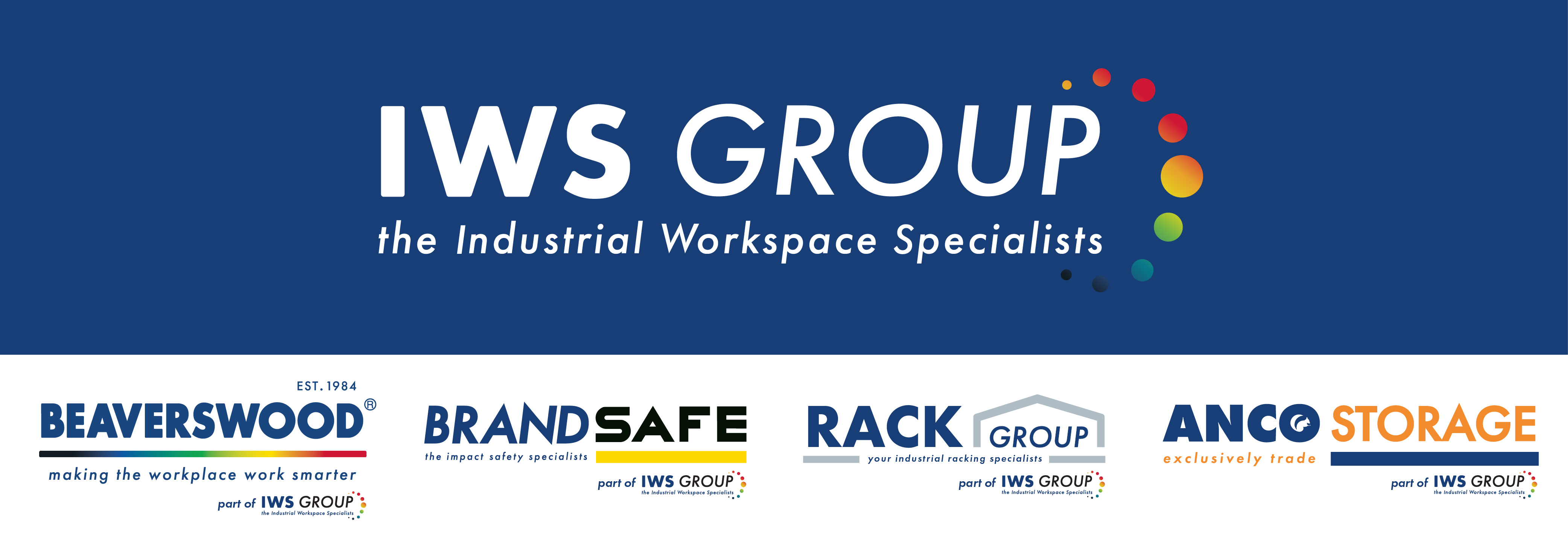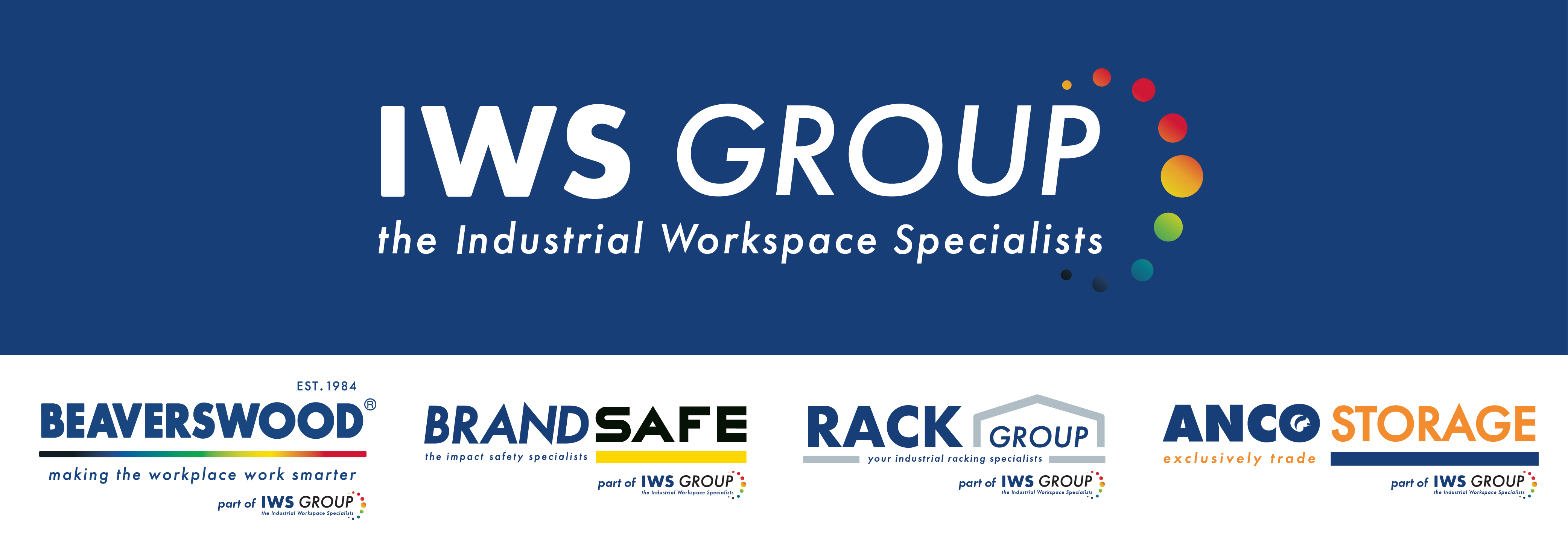Information
-
Weekly Manager’s Inspection
-
Document No.
-
Project Scope and Information
-
Personnel
-
Conducted on
-
Prepared by
-
Location
FALL PROTECTION 1926.500
-
Safety guardrails and/or cables secured properly?
-
1926.502(b)(1) - Top edge height of top rails, or equivalent guardrail system members, shall be 42 inches (1.1 m) plus or minus 3 inches (8 cm) above the walking/working level. When conditions warrant, the height of the top edge may exceed the 45-inch height, provided the guardrail system meets all other criteria of this paragraph.
-
Safety harnesses worn properly and inspected before use?
-
It is vitally important that chest straps are positioned in the mid-chest area. If a chest strap is not fastened properly, it can slide up around a worker’s neck after a fall. Back D-rings located in the middle of the back between the shoulder blades. In addition, the leg straps must be tightened for a snug fit.
1926.502(d)(21) - Personal fall arrest systems shall be inspected prior to each use for wear, damage and other deterioration, and defective components shall be removed from service. -
Employees exposed to fall hazards tied off?
-
1926.501(b)(1) - "Unprotected sides and edges." Each employee on a walking/working surface (horizontal and vertical surface) with an unprotected side or edge which is 6 feet (1.8 m) or more above a lower level shall be protected from falling by the use of guardrail systems, safety net systems, or personal fall arrest systems.
-
Warning line system in use?
-
1926.502(f)
-
Employees or public below protected from falling objects?
-
1926.502(j) - Toeboards, when used as falling object protection, shall be erected along the edge of the overhead walking/working surface for a distance sufficient to protect employees below.
1926.502(j)(2) - Toe boards shall be capable of withstanding, without failure, a force of at least 50 pounds (222 N) applied in any downward or outward direction at any point along the toeboard.
1926.502(j)(3) - Toe boards shall be a minimum of 3 1/2 inches (9 cm) in vertical height from their top edge to the level of the walking/working surface. They shall have not more than 1/4 inch (0.6 cm) clearance above the walking/working surface. They shall be solid or have openings not over 1 inch (2.5 cm) in greatest dimension.
1926.502(j)(4) - Where tools, equipment, or materials are piled higher than the top edge of a toeboard, paneling or screening shall be erected from the walking/working surface or toeboard to the top of a guardrail system's top rail or midrail, for a distance sufficient to protect employees below.
1926.502(j)(5) - Guardrail systems, when used as falling object protection, shall have all openings small enough to prevent passage of potential falling objects.
1926.502(j)(6) - During the performance of overhand bricklaying and related work:
1926.502(j)(6)(i) - No materials or equipment except masonry and mortar shall be stored within 4 feet (1.2 m) of the working edge.
1926.502(j)(6)(ii) - Excess mortar, broken or scattered masonry units, and all other materials and debris shall be kept clear from the work area by removal at regular intervals.
1926.502(j)(7) - During the performance of roofing work:
1926.502(j)(7)(i) - Materials and equipment shall not be stored within 6 feet (1.8 m) of a roof edge unless guardrails are erected at the edge.
1926.502(j)(7)(ii) - Materials which are piled, grouped, or stacked near a roof edge shall be stable and self-supporting.
1926.502(j)(8) - Canopies, when used as falling object protection, shall be strong enough to prevent collapse and to prevent penetration by any objects which may fall onto the canopy. -
Are all holes, including skylights, hatches, drains covered or barricaded with guard rail systems?<br><br>NOTE: THIS APPLIES TO TREMCARE, JSI AND SUPERVISOR INSPECTIONS. Warning line systems and safety monitors are NOT acceptable protection.
-
1926.500(b) - "Hole" means a gap or void 2 inches or more in its least dimension, in a floor, roof, or other walking/ working surface.
1926.501(b)(4) - Employees on a walking/ working surface shall be protected from falling through holes (including skylights) more that 6 feet above lower levels, by personal fall arrest systems, covers, or guardrail system erected around such holes. -
Are all temporary covers marked "HOLE" or "COVER" ("Opening-Do Not Remove" in California)
-
1926.502(i)(2) - All covers shall be capable of supporting, without failure, at least twice the weight of employees, equipment, and materials that may be imposed on the cover at any one time.
1926.502(i)(4) - All covers shall be color coded or shall be marked with the word "HOLE" or "COVER" to provide warning of the hazard.( note: this provision does not apply to cast iron manhole covers or steel grates used on streets or roadways. -
Materials stored away from edge?
-
1926.250(b)(1) - Material stored inside buildings under construction shall not be placed within 6 feet of any hoist way or inside floor openings, nor within 10 feet of an exterior wall which does not extend above the top of the material stored.
-
PORTABLE LADDERS 1926.1050
-
Ladders extended at least 36" above landing?
-
1926.1053(b)(1) - When portable ladders are used for access to an upper landing surface the ladder side-rails shall extend at least 3 feet above the upper landing surface to which the ladder is used to gain access; or, when such an extension is not possible because of its length, then the ladder shall be secured at its top to a rigid support that will not defect, and a grasping device, such as a grab-rail, shall be provided to assist employees in mounting and dismounting the ladder. In no case shall the extension ladder be such that the ladder deflection under a load would, by itself, cause the ladder to slip off its support.
-
Ladders are secure to prevent slipping, sliding or falling?
-
Ladders shall be braced or tied off at the base and top to prevent it from being displaced by workplace activities or traffic. Leave all tie-off devices in place until they must be removed before taking the ladder down.
Tremco/WTI policy for ladder tie-off prohibits use of bungy cords for this purpose. -
Ladders with missing or damaged rungs, feet, or rails are taken out of service?
-
1926.1053(b)(15) - Ladders shall be inspected by a competent person for visual defects on a periodic basis and after an occurrence that could effect their safe use.
1926.1053(b)(16) - Portable ladders with structural defects, such as, but not limited to, missing rungs, cleats, or steps, broken or split rails, corroded components, or faulty or defective components , shall either be immediately marked in a manner that readily identifies them as defective, or be tagged with "do not use" or similar language, and shall be withdrawn from service until repaired. -
Stepladders used in fully open position?
-
1926.1053(a)(8) - A metal spreader or locking device shall be provided on each step ladder to hold the front and back sections in an open position when the ladder is being used.
-
No step at top two rungs of stepladder?
-
1926.1053(b)(13) - The top or top step of a step ladder shall not be used as a step.
FIXED LADDERS 1926.1053
-
Ladder has extension or handrail at least 36" above landing?
-
Policy extended from 1926.1053(b)(1) - When ... ladders are used for access to an upper landing surface the ladder side-rails shall extend at least 3 feet above the upper landing surface to which the ladder is used to gain access; or, when such an extension is not possible because of its length, then the ladder shall be secured at its top to a rigid support that will not defect, and a grasping device, such as a grab-rail, shall be provided to assist employees in mounting and dismounting the ladder. In no case shall the extension ladder be such that the ladder deflection under a load would, by itself, cause the ladder to slip off its support.
-
Ladders are securely attached to the wall or structure to prevent movement, slipping or detachment?
-
Ladders shall be fastened to prevent it from being displaced by workplace use. All fasteners must be fully engaged in the substrate and not corroded.
Tremco/WTI policy for substandard fixed ladders is to tag or caution tape them and inform the customer and sales rep that the ladder will not be used (withdrawn from service) until repaired -
Ladders have proper clearance between rungs and wall (7"), behind (30") and on each side (15" from center of ladder on both sides). No materials or equipment are placed between ladder and wall, next to ladder or obstructing clearance behind climber.
-
1926.1053(b)(15) - Ladders shall be inspected by a competent person for visual defects on a periodic basis and after an occurrence that could effect their safe use.
1926.1053(b)(16) - Portable ladders with structural defects, such as, but not limited to, missing rungs, cleats, or steps, broken or split rails, corroded components, or faulty or defective components , shall either be immediately marked in a manner that readily identifies them as defective, or be tagged with "do not use" or similar language, and shall be withdrawn from service until repaired.
Tremco/WTI policy for substandard fixed ladders is to tag or caution tape them and inform the customer and sales rep that the ladder will not be used (withdrawn from service) until repaired -
1926.1053(b)(15) - Ladders shall be inspected by a competent person for visual defects on a periodic basis and after an occurrence that could effect their safe use.
1926.1053(b)(16) - Portable ladders with structural defects, such as, but not limited to, missing rungs, cleats, or steps, broken or split rails, corroded components, or faulty or defective components , shall either be immediately marked in a manner that readily identifies them as defective, or be tagged with "do not use" or similar language, and shall be withdrawn from service until repaired.
Tremco/WTI policy for substandard fixed ladders is to tag or caution tape them and inform the customer and sales rep that the ladder will not be used (withdrawn from service) until repaired -
Ladders with missing or damaged rungs, feet, or rails are taken out of service?
Heat Illness Prevention
-
Has the Heat Risk been determined, e.g. With the OSHA Heat App or other tool?
-
Is there plenty of cool water on site for each person (4 cups per hour per person)
-
Is there a procedure to ensure that workers are drinking enough water?
FIRST AID AND SANITATION
-
Potable drinking water available?
-
1926.51(a)(1) - An adequate supply of potable water shall be provided in all places of employment.
1926.51(a)(6) Potable water means water that meets the standards for drinking purposes of the State or local authority having jurisdiction, or water that meets the quality standards prescribed by the U.S. Environmental Protection Agency's National Primary Drinking Water Regulations (40 CFR part 141). -
Is shade or an indoor or cool area available for rest breaks?
-
Eye wash station?
-
1926.50(g) - Where the eyes or body of any person may be exposed to injurious corrosive materials, suitable facilities for quick drenching or flushing of the eyes and body shall be provided within the work area for immediate emergency use.
-
First aid kit accessible and properly identified?
-
1926.50(d)(1) - First aid supplies shall be easily accessible when required.
First Aid kits should be on the roof for any project work. On limited scope (short duration service orders) the first aid kit can be left in the truck rather the roof, provided there is quick, easy access to stairs or ladders to use the first aid supplies. Every truck should have a First Aid kit.
HOUSEKEEPING 1926.25
-
Work areas neat?
-
1926.25(a) - During the course of construction, alteration, or repairs, form and scrap lumber with protruding nails, and all other debris, shall be kept cleared from work areas, passageways, and stairs, in and around buildings or other structures.
1926.25(b) - Combustible scrap and debris shall be removed at regular intervals during the course of construction. Safe means shall be provided to facilitate such removal. -
Projecting nails or screws bent over or removed?
-
1926.25(a) - During the course of construction, alteration, or repairs, form and scrap lumber with protruding nails, and all other debris, shall be kept cleared from work areas, passageways, and stairs, in and around buildings or other structures.
1926.25(b) - Combustible scrap and debris shall be removed at regular intervals during the course of construction. Safe means shall be provided to facilitate such removal. -
Waste containers provided, used, and emptied when full?
-
1926.25(c) - Containers shall be provided for the collection and separation of waste, trash, oily and used rags, and other refuse. Containers used for garbage and other oily, flammable, or hazardous wastes, such as caustics, acids, harmful dusts, etc. shall be equipped with covers. Garbage and other waste shall be disposed of at frequent and regular intervals.
-
Passageways and walkways clear?
-
1926.25(a) - During the course of construction, alteration, or repairs, form and scrap lumber with protruding nails, and all other debris, shall be kept cleared from work areas, passageways, and stairs, in and around buildings or other structures.
1926.25(b) - Combustible scrap and debris shall be removed at regular intervals during the course of construction. Safe means shall be provided to facilitate such removal. -
Cords and leads off the walking/working surface of the roof?
FIRE PREVENTION 1926.150
-
Adequate fire extinguishers located throughout job site?
-
1926.150(c)(1)(i) - A fire extinguisher, rated not less than 2A, shall be provided for each 3,000 square feet of the protected building area, or major fraction thereof. Travel distance from any point of the protected area to the nearest fire extinguisher shall not exceed 100 feet.
1926.150(c)(1)(iv) -One or more fire extinguishers, rated not less than 2A, shall be provided on each floor. In multistory buildings, at least one fire extinguisher shall be located adjacent to stairway -
Fire Extinguishers inspected as required and accessible?
-
1926.150(c)(1)(viii) - Portable fire extinguishers shall be inspected periodically and maintained in accordance with Maintenance and Use of Portable Fire Extinguishers
-
Job specific phone no. of Fire Department available?
-
"No Smoking" enforced on roof and near flammables?
-
1926.151(a)(3) - Smoking shall be prohibited at or in the vicinity of operations which constitute a fire hazard, and shall be conspicuously posted: "No Smoking or Open Flame."
-
Fuels properly stored?
-
1926.152(a)(2) - Flammable liquids shall not be stored in areas used for exits, stairways, or normally used for the safe passage of people.
-
Only approved containers for flammables and combustible liquids used?
-
1926.152(a)(1) - Only approved containers and portable tanks shall be used for storage and handling of flammable liquids. Approved safety cans or Department of Transportation approved containers shall be used for the handling and use of flammable liquids in quantities of 5 gallons or less, except that this shall not apply to those flammable liquid materials which are highly viscid (extremely hard to pour), which may be used and handled in original shipping containers. For quantities of one gallon or less, the original container may be used, for storage, use and handling of flammable liquids.
ELECTRICAL 1926.400
-
Extension cords with bare wires or missing ground prongs taken out of service?
-
1926.416(e)(1) - Worn or frayed electric cords or cables shall not be used.
-
Ground fault interrupters being used?
-
1926.404(b)(1)(ii) - Ground-fault circuit interrupters. All 120-volt, single-phase 15- and 20-ampere receptacle outlets on construction sites, which are not a part of the permanent wiring of the building or structure and which are in use by employees, shall have approved ground-fault circuit interrupters for personnel protection.
Tremco/WTI Policy: GFCI will be used for all corded tools and equipment, whether GFCI outlets are available or not. -
Adequate temporary lighting?
-
1926.56(a) - General. Construction areas, ramps, runways, corridors, offices, shops, and storage areas shall be lighted to not less 5 foot-candles of illumination.
-
Are panel boxes properly secured?
-
Circuits being worked on properly locked and tagged out?
-
Are exterior panels, outlets, and switches weatherproof?
-
Are there any exposed live electrical parts?
HAND, POWER & POWDER ACTUATED TOOLS 1926.300
-
Hand tools inspected regularly and free of damage?
-
Guards in place on machines and tools?
-
1926.300(b)(1) - When power operated tools are designed to accommodate guards, they shall be equipped with such guards when in use.
-
Correct tool being used for job at hand?
-
Operators of powder actuated tools trained?
-
1926.302(e)(1) - Only employees who have been trained in the operation of the particular tool in use shall be allowed to operate a powder-actuated tool.
Tremco/WTI Policy: Employees must have a current Operator Certification card or certificate from the tool manufacturer to be in compliance with this requirement. -
Powder actuated tools stored properly when not in use?
-
1926.302(e)(6) - Loaded tools shall not be left unattended.
-
Power tools properly grounded?
-
1926.302(a)(1) - Electric power operated tools shall either be of the approved double-insulated type or grounded in accordance with Subpart K of this part.
SCAFFOLDING 1926.450
-
Is there any scaffolding on the jobsite?
-
All scaffolding inspected daily?
-
1926.451(f)(3) - Scaffolds and scaffold components shall be inspected for visual defects by a competent person before each work shift, and after any occurrence which could effect the scaffolds structural integrity.
Tremco/WTI Policy: Competent Person must be designated in writing and certified by the employer. This applies to Tremco/WTI employees, subcontractors or contractors on Tremco projects. -
Erected on sound rigid footing?
-
1926.451.(c)(2) - supported scaffold poles, legs, posts, frames, and uprights shall bear on base plates and mud sills or other adequate firm foundation.
1926451(c)(2)(i) - Footings shall be level, rigid, and capable of supporting a loaded scaffold without settling or displacement.
1926.451(c)(2)(ii) - Unstable objects shall not be used to support scaffolds or platforms.
1926.451(c)(2)(iv) - Front-end loaders and similar pieces of equipment shall not be used to support scaffold platforms unless they have been specifically designed by the manufacturer for such use.
1926.451(c)(2)(v) - Fork-lifts shall not be used to support scaffold platforms unless the entire platform is attached to the fork and the fork-lift is not moved horizontally while the platform is occupied -
Tied to structure as required?
-
1926.451(c)(1)(ii) - Guys, ties, and braces shall be installed according to the scaffold manufacturer's recommendations or at the closest horizontal member to the 4:1 height and be repeated vertically at locations of horizontal members every 20 feet (6.1 m) or less thereafter for scaffolds 3 feet (0.91 m) wide or less, and every 26 feet (7.9 m) or less thereafter for scaffolds greater than 3 feet (0.91 m) wide. The top guy, tie or brace of completed scaffolds shall be placed no further than the 4:1 height from the top. Such guys, ties and braces shall be installed at each end of the scaffold and at horizontal intervals not to exceed 30 feet (9.1 m) (measured from one end [not both] towards the other).
-
Guardrails, mid-rails, toe boards and screens in place and installed as required?
-
1926.451(g)(1) - Each employee on a scaffold more than 10 feet above a lower level shall be protected from falling to a lower level. (refer to the fall protection section for more information about guardrail details.)
-
Proper access provided?
-
1926.451(e)(1) - When scaffold platforms are more that 2 feet above or below a point of access, portable ladders, hook-on ladders, attachable ladders, stair towers, stairway type ladders, ramps, walkways, integral prefabricated scaffold access(ladders build into the frame), or direct access from another scaffold, structure, personnel hoist, or similar surface shall be used. CROSS-BRACES SHALL NOT BE USED AS MEANS OF ACCESS.
-
Scaffold Platform is fully planked?
-
1926.451(b)(1) - Each platform on all working levels of a scaffold shall be fully planked or decked between the front uprights and the guardrail supports.
1926.451(b)(1)(i) - Each scaffold platform unit(plank) shall be installed so that the space between adjacent units and the space between the platform and upright is no more than 1 inch wide, except to fit around uprights when side (outrigger) brackets are used. -
Employees below protected from falling objects?
-
1926.451(h)(2)(i) - The area below the scaffold to which objects can fall shall be barricaded, and employees shall not be permitted to enter the hazard area.
MATERIAL HANDLING
-
Materials properly stored or stacked?
-
1926.250(a)(1) - All materials stored in tiers shall be stacked, racked, blocked, interlocked, or otherwise secured to prevent sliding, falling or collapse.
-
Employees using proper lifting techniques?
-
Tremco/WTI Policy: Workers use carts or dollies to move rolls or buckets to avoid sprains and strains.
-
Chemical containers properly labeled?
WELDING AND BURNING
-
Are there any welding or cutting activities on the jobsite?
-
Gas cylinders are secured stored upright?
-
1926.350(a)(9) - Compressed gas cylinders shall be secured in an upright position at all times except, if necessary, for short periods of time while cylinders are actually being hoisted or carried.
-
Proper separating distances between fuels & oxygen? (20'min)
-
1926.350(a)(10) - Oxygen cylinders in storage shall be separated from fuel-gas cylinders or combustible materials (especially oil or grease), a minimum distance of 20 feet (6.1 m) or by a noncombustible barrier at least 5 feet (1.5 m) high having a fire-resistance rating of at least one-half hour.
-
Goggles or shields used?
-
Fire extinguishers readily available?
-
1926.352(d) - Suitable fire extinguishing equipment shall be immediately available in the work area and shall be maintained in a state of readiness for instant use.
-
Hoses in good condition?
-
1926.350(f)(3) - All hose in use, carrying acetylene, oxygen, natural or manufactured fuel gas, or any gas or substance which may ignite or enter into combustion, or be in any way harmful to employees, shall be inspected at the beginning of each working shift. Defective hose shall be removed from service.
-
Welding screens being used?
-
1926.351(e) - Shielding. Whenever practicable, all arc welding and cutting operations shall be shielded by noncombustible or flameproof screens which will protect employees and other persons working in the vicinity from the direct rays of the arc.
CRANES
-
Are there any cranes on the jobsite?
-
Outriggers extended and swing radius barricade in place?
-
1926.1424(a) - Swing radius hazards.
1926.1424(a)(1) - The requirements in paragraph (a)(2) of this section apply where there are accessible areas in which the equipment's rotating superstructure (whether permanently or temporarily mounted) poses a reasonably foreseeable risk of:
1926.1424(a)(1)(i) - Striking and injuring an employee; or
1926.1424(a)(1)(ii) - Pinching/crushing an employee against another part of the equipment or another object.
1926.1424(a)(2) - To prevent employees from entering these hazard areas, the employer must:
1926.1424(a)(2)(i) - Train each employee assigned to work on or near the equipment ("authorized personnel") in how to recognize struck-by and pinch/crush hazard areas posed by the rotating superstructure.
1926.1424(a)(2)(ii) - Erect and maintain control lines, warning lines, railings or similar barriers to mark the boundaries of the hazard areas. Exception: When the employer can demonstrate that it is neither feasible to erect such barriers on the ground nor on the equipment, the hazard areas must be clearly marked by a combination of warning signs (such as "Danger--Swing/Crush Zone") and high visibility markings on the equipment that identify the hazard areas. In addition, the employer must train each employee to understand what these markings signify. -
Crane operator licensed?
-
1926.1427(b) - Option (1): Certification by an accredited crane operator testing organization.
-
Hand signal charts on crane?
-
1926.1422 - Hand signal charts must be either posted on the equipment or conspicuously posted in the vicinity of the hoisting operations.
-
Crane has documentation of valid annual inspection?
-
1926.1412(f)(7) - Documentation of annual/comprehensive inspection. The following information must be documented, maintained, and retained for a minimum of 12 months, by the employer that conducts the inspection:
1926.1412(f)(7)(i) - The items checked and the results of the inspection.
1926.1412(f)(7)(ii) - The name and signature of the person who conducted the inspection and the date. -
Employees kept from under suspended loads?
-
1926.1425(b) - While the operator is not moving a suspended load, no employee must be within the fall zone, except for employees:
1926.1425(b)(1) - Engaged in hooking, unhooking or guiding a load;
1926.1425(b)(2) - Engaged in the initial attachment of the load to a component or structure; or
1926.1425(b)(3) - Operating a concrete hopper or concrete bucket.
1926.1401 - Fall zone means the area (including but not limited to the area directly beneath the load) in which it is reasonably foreseeable that partially or completely suspended materials could fall in the event of an accident. -
Chains and slings inspected and tagged as required?
-
1926.251(a)(6) - "Inspections." Each day before being used, the sling and all fastenings and attachments shall be inspected for damage or defects by a competent person designated by the employer. Additional inspections shall be performed during sling use, where service conditions warrant. Damaged or defective slings shall be immediately removed from service.
1926.251(b)(6)(i) - In addition to the inspection required by other paragraphs of this section, a thorough periodic inspection of alloy steel chain slings in use shall be made on a regular basis, to be determined on the basis of (A) frequency of sling use; (B) severity of service conditions; (C) nature of lifts being made; and (D) experience gained on the service life of slings used in similar circumstances. Such inspections shall in no event be at intervals greater than once every 12 months.
1926.251(b)(1) - Welded alloy steel chain slings shall have permanently affixed durable identification stating size, grade, rated capacity, and sling manufacturer.
1926.251(c)(1) - Employers must not use improved plow-steel wire rope and wire-rope slings with loads in excess of the rated capacities (i.e., working load limits) indicated on the sling by permanently affixed and legible identification markings prescribed by the manufacturer. -
Employees handling loads trained in rigging and signaling?
-
1926.1428(a) - The employer of the signal person must ensure that each signal person meets the Qualification Requirements (paragraph (c) of this section) prior to giving any signals. This requirement must be met by using either a third party qualified evaluator or employers qualified evaluator.
1926.1404(r)(1) - The rigging work is done by a qualified rigger.
1926.1425(c) - When employees are engaged in hooking, unhooking, or guiding the load, or in the initial connection of a load to a component or structure and are within the fall zone, all of the following criteria must be met:
1926.1404(c)(3) – The material must be rigged by a qualified rigger -
Tag lines used to guide loads?
-
1926.953(d) - Tag line. Where hazards to employees exist, tag lines or other suitable devices shall be used to control loads being handled by hoisting equipment.
AERIAL LIFTS
-
Are there any aerial lifts on the jobsite?
-
Daily pre-operational inspections performed and documented?
-
Fall arrest systems used on boom or articulating lifts?
-
1926.453(b)(2)(v) - A fall protection harness shall be worn and a lanyard attached to the boom or basket when working from an aerial lift.
-
Operators trained?
PERSONAL PROTECTIVE EQUIPMENT
-
Hard hats being worn?
-
1926.100(a) - Employees working in areas where there is a possible danger of head injury from impact, or from falling or flying objects, or from electrical shock and burns, shall be protected by protective helmets.
Tremco/WTI Policy: Hard hats must be worn on all customer sites at all times. -
Safety glasses being worn when required?
-
1926.102(a)(1) - Employees shall be provided with eye and face protection equipment when machines or operations present potential eye or face injury from physical, chemical, or radiation agents.
Tremco/WTI Policy - Based on the recognition that all activities present potential eye or face injury from physical, chemical, or radiation agents, eye protection at minimum is required at all times when employees are on company job sites such as a roof, customer property or storage facilities. -
Respirators used when required? Proper respirator documentation available?
-
Hearing protection being worn when required?
-
1926.101(a) - Wherever it is not feasible to reduce the noise levels or duration of exposures to those specified in Table D-2, Permissible Noise Exposures, in 1926.52, ear protective devices shall be provided and used.
-
Traffic vests or high visibility clothing material being worn?
COMMENTS
-
Other unsafe acts or practices observed?
-
Add media
-
Commendations or best practices observed?
-
Add media
-
Other
-
Add media
Truck Audit Photos
-
Add media
Service Order (photo)
-
Add media
SIGNATURE
-
Superintendent / Project Manager
-
On site leadership
-
